When Ana Maier discovered eco printing in 2016 it brought together her two loves: botany and art.
Having always been a lover of books and plants, as well as an artist and teacher, Ana seized the chance to transform her creative process. Once focussing on the use of paper and other mediums to create art that investigated territories, maps, horizons and skylines, she now makes patterns with natural dyeing and botanical printing on fabrics. Her poetic nature provides the inspiration to enhance these with simple hand embroidery to outline the human faces that reveal themselves to her, and to bring out the expression of eyes and movement of hands that suggest actions, emotions and stories.
Ana lives in São Paulo, Brazil and participates in several exhibitions there. She has a degree in visual arts from the Federal University of Minas Gerais and a master’s degree from the State University of Rio de Janeiro. In 2016 one of her works was selected for the 11th International Biennial of Contemporary Textile Art “Scythia” in Kherson, Ukraine.
In the same year, she held an artistic residency in Central Mexico – it was there that she rescued her passion for nature.
In this interview, Ana tells us how she studied and developed the art of eco-printing and how she integrates hand embroidery. She focuses on her piece “Conexão infinita” and shares insights into her materials, her process and the weaving of the human element into her leafy prints.
Name of piece: Conexão infinita
Year of piece: 2020
Techniques and materials used: 84 x 114 cm, Techniques: Ecoprint and embroidery, Materials: Threads on ecoprinted canvas
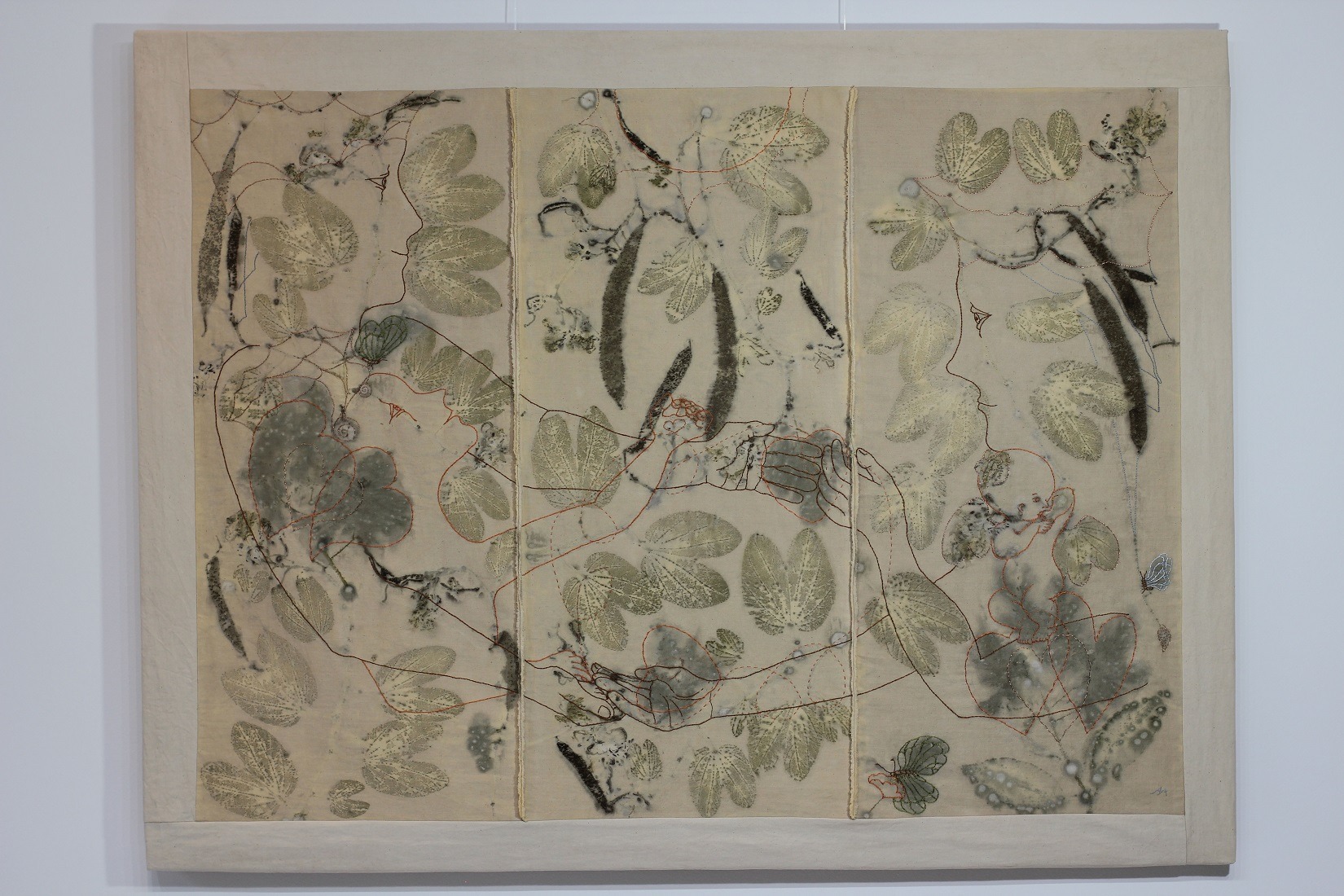
Continuous thread of love
TextileArtist.org: How did the idea for the piece come about? What was your inspiration?
Ana Maier: “Conexão infinita”, or infinite connection is the centerpiece of a series of recent works that I call “Expressões botânicas” or botannical expressions. This is because each project is carried out in two main stages: first, a background full of natural plant ornaments is created, which act as an inspiration for the definitive idea. In other words, it is the shapes and colors of this composition that suggest an initial outline. From there, the theme is elaborated until its final design.
With this creative strategy I try to access true affective content and give identity to my artwork.
Despite the autobiographical aspect of this source of inspiration, both the characters and the actions featured in the visual narratives are modified until they become fictional. This happens, because the human unconscious is able to rescue universal symbologies, which then can be incorporated with new meanings into the work, allowing several reinterpretations.
Thanks to my interest in biology, I can say that I have a more focused view on organic forms and life cycles. I like to imagine that every tree has a soul and communicate with each other. This leads me to see human faces and their expressions in the shape of plants or in the space between them – and to imagine dialogues and interactions happening with these mythical beings.
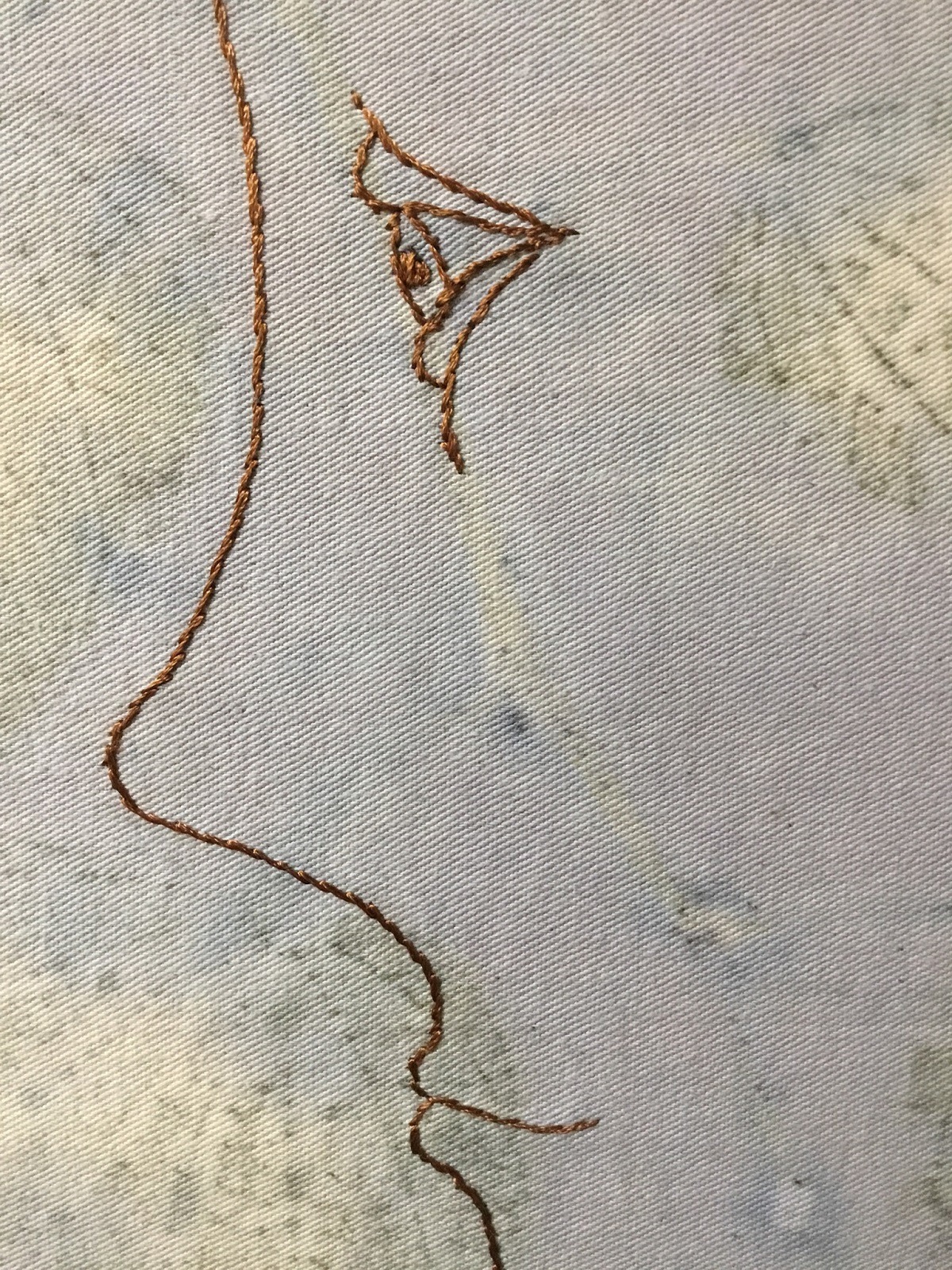
In “Conexão infinita” there is a continuous thread, almost entirely embroidered in running stitch, which flows through the elements present in the story, or suggest others that are absent. However, its flow mixes with the background full of visual information on the screen. This subtlety is intentional: as the image is divided into three parts and the drawing is fragmented, it is necessary to get closer to realize that this line has no beginning or end, or even a defined direction. Its function is to act as a guiding thread of love or vital energy, connecting the main elements and reinforcing the magical atmosphere of the narrative.
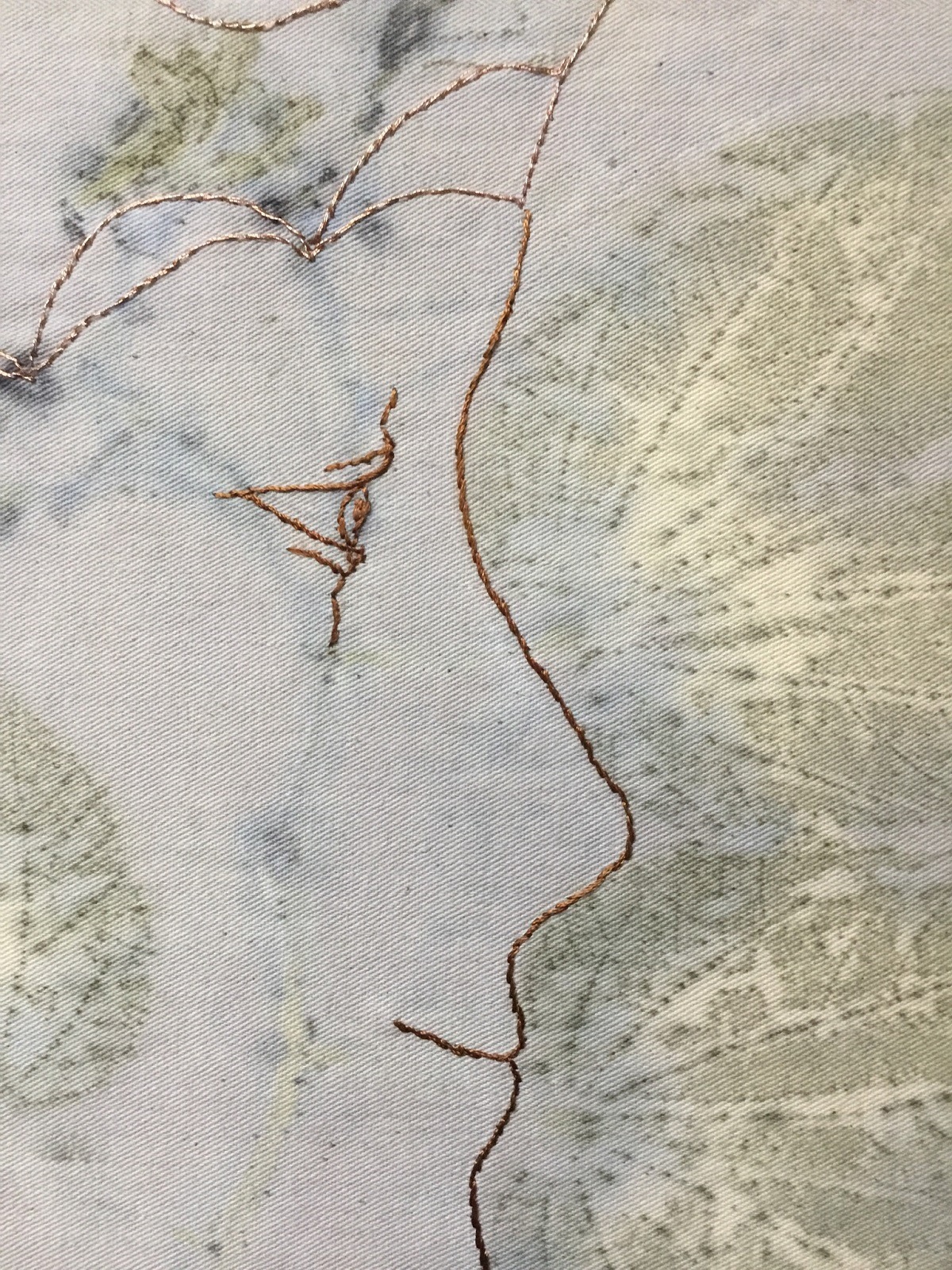
What research did you do before you started to make?
When I learnt to do botanical printing in 2016, I finally found a way to bring together my two areas of academic knowledge: botany and art. I worked for two years in the studio of slow fashion designer Flávia Aranha, with the goal of perfecting my skills in this recently discovered technique that has become known as ecoprint. I still appear with Flavia and her team in the photos on her website.
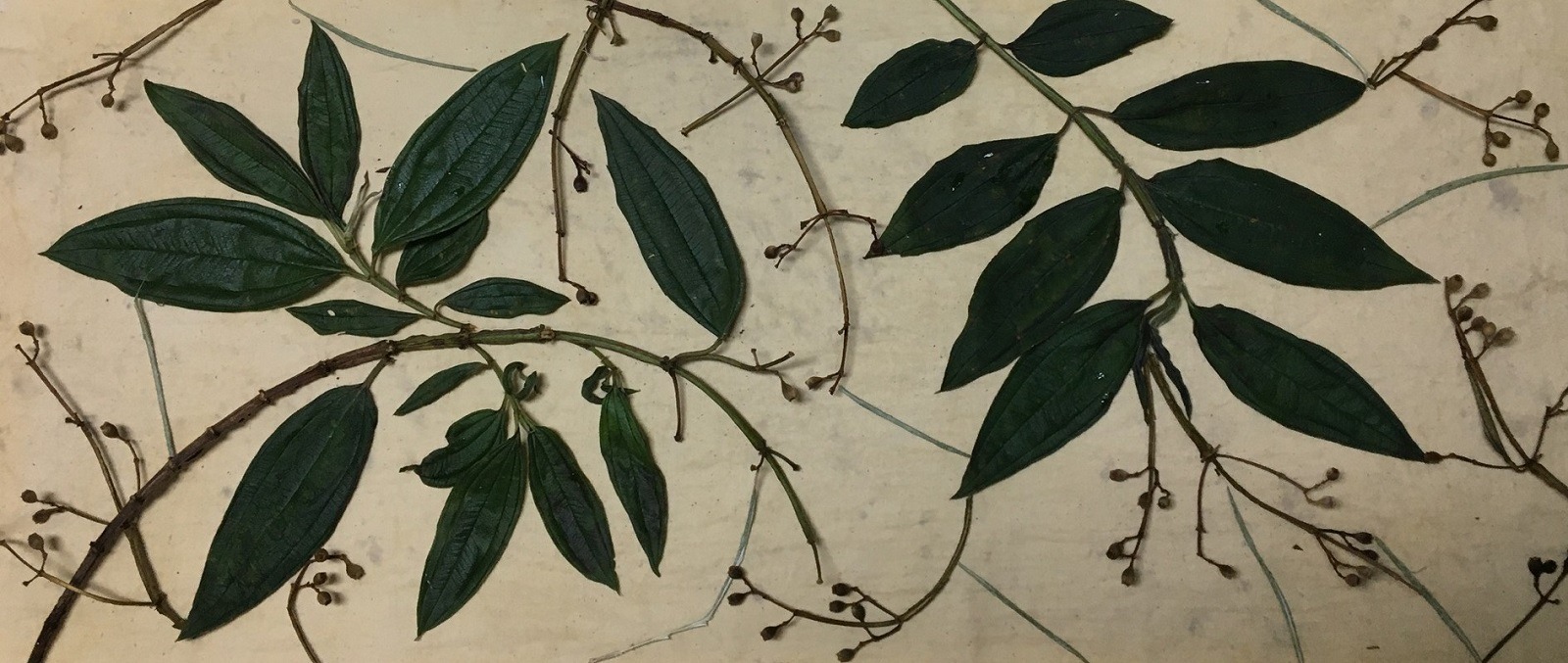
The process looks simple but involves countless variables and methodologies. It basically consists of fixing plant shapes and pigments in natural fiber fabrics such as silk or linen. The result is always surprising and unique. It is precisely what fascinates me and challenges me to go beyond the mere decorative function of patterns. To improve this manual knowledge with more advanced methods, which achieve a more precise definition of images on canvas, I did a workshop on mordants and cellulose with the amazing ecoprint master Irit Dulman, in 2019 in Uruguay. Since then I have kept updating myself and researching new discoveries on the internet, reading papers and books related to this subject.
Nowadays I develop my own compositions, bigger and more complex, without worrying so much about realistic precision, but trying to reflect my poetic sensitivity and intention. I experiment freely with plants that I find easily in the squares and parks of my city, combining colors and shapes. The decisive change happens when I see in my projects a pictorial potential for reinvention that comes close to contemporary aesthetics. I see my ecoprints as a starting point and inspiration to overlap and integrate other images suggested by the botanical background itself, like a second drawing layer. Making an analogy, it is like when we project our imagination by recognizing shapes in clouds or in strips of peeled walls. It is not a blank canvas but a universe of poetic possibilities.
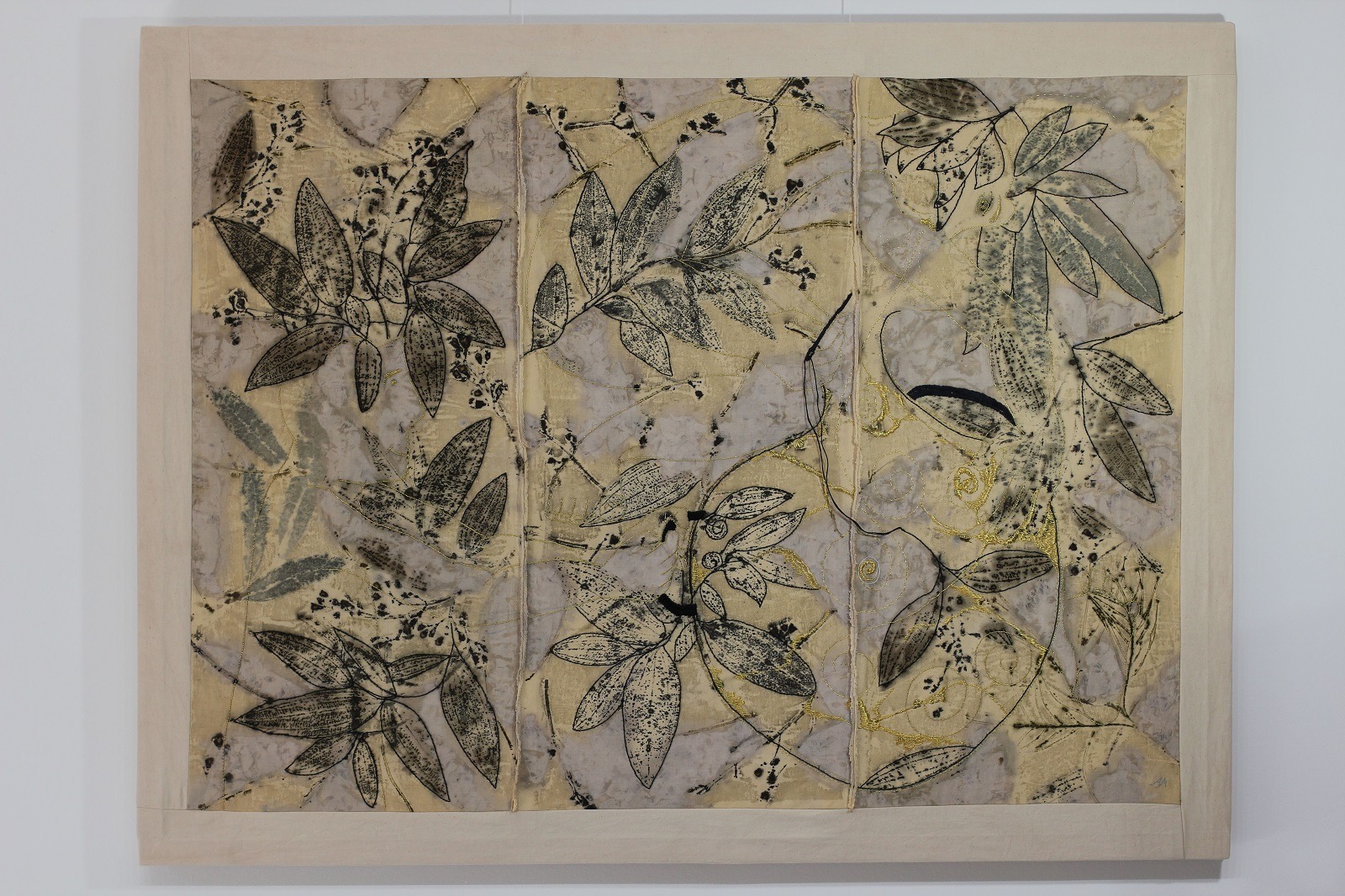
Restaurants, tea houses and food waste
Was there any other preparatory work?
When planning the first layer of images, I prepare at least three versions of each botanical composition, always with the predominance of one or two similar plant species and some element of another plant for specific details or to delimit areas of color. It is important to note that my purpose is not to reproduce plants in a realistic way as they are in nature, but to partially reinvent their colors and shapes in unusual combinations.
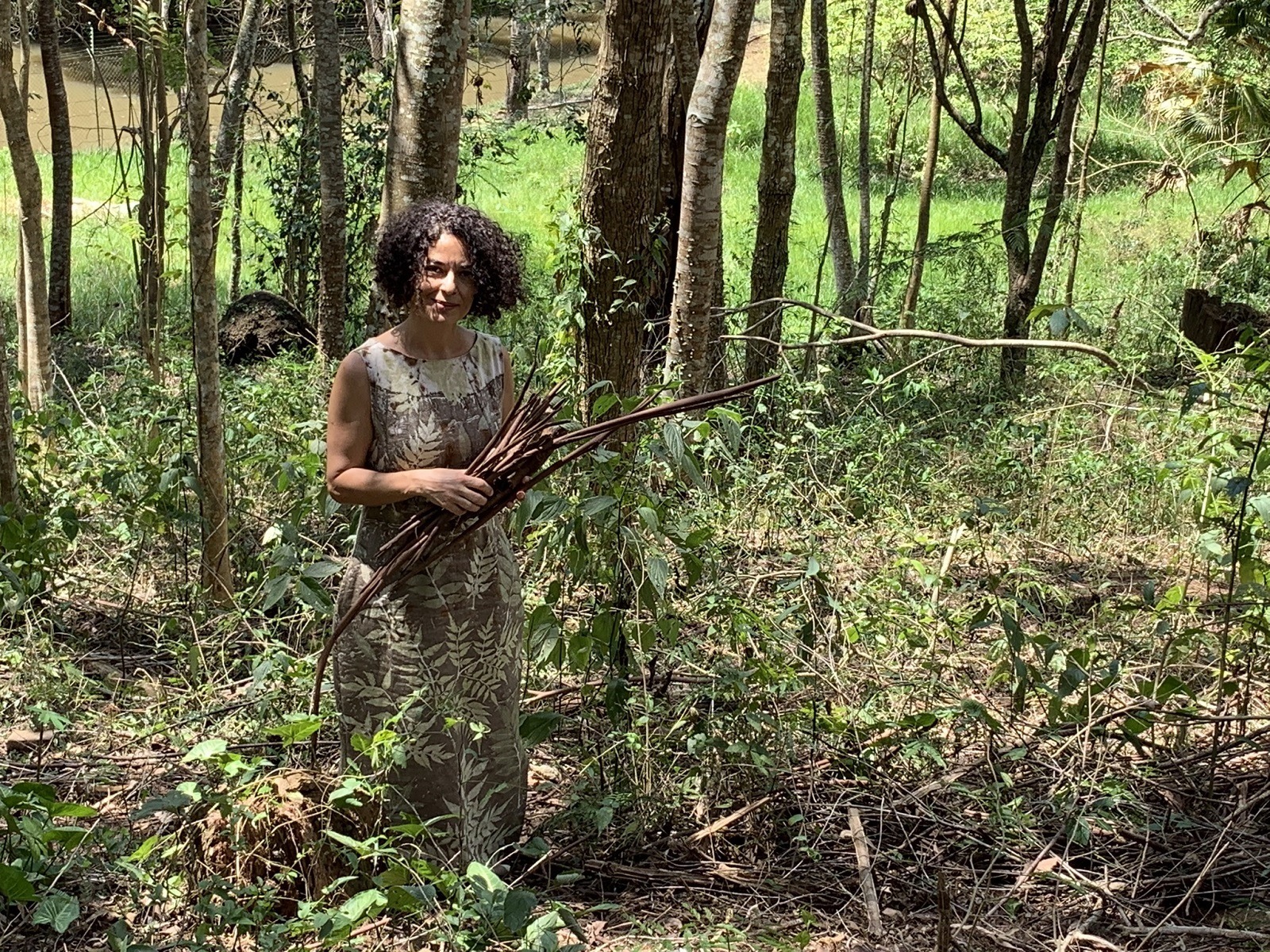
Image manipulation is also produced by the use of tannins, mordants and fixatives that cause specific physical-chemical reactions. A simple variation in the pH rate can change an entire color chart.
Some natural pigments are extremely volatile and sensitive to light, so a lot of practice and technical mastery helps to predict, prevent and solve problems. Any mistakes are also welcome, I think that when they happen we have the opportunity to learn something new, isn’t it true?
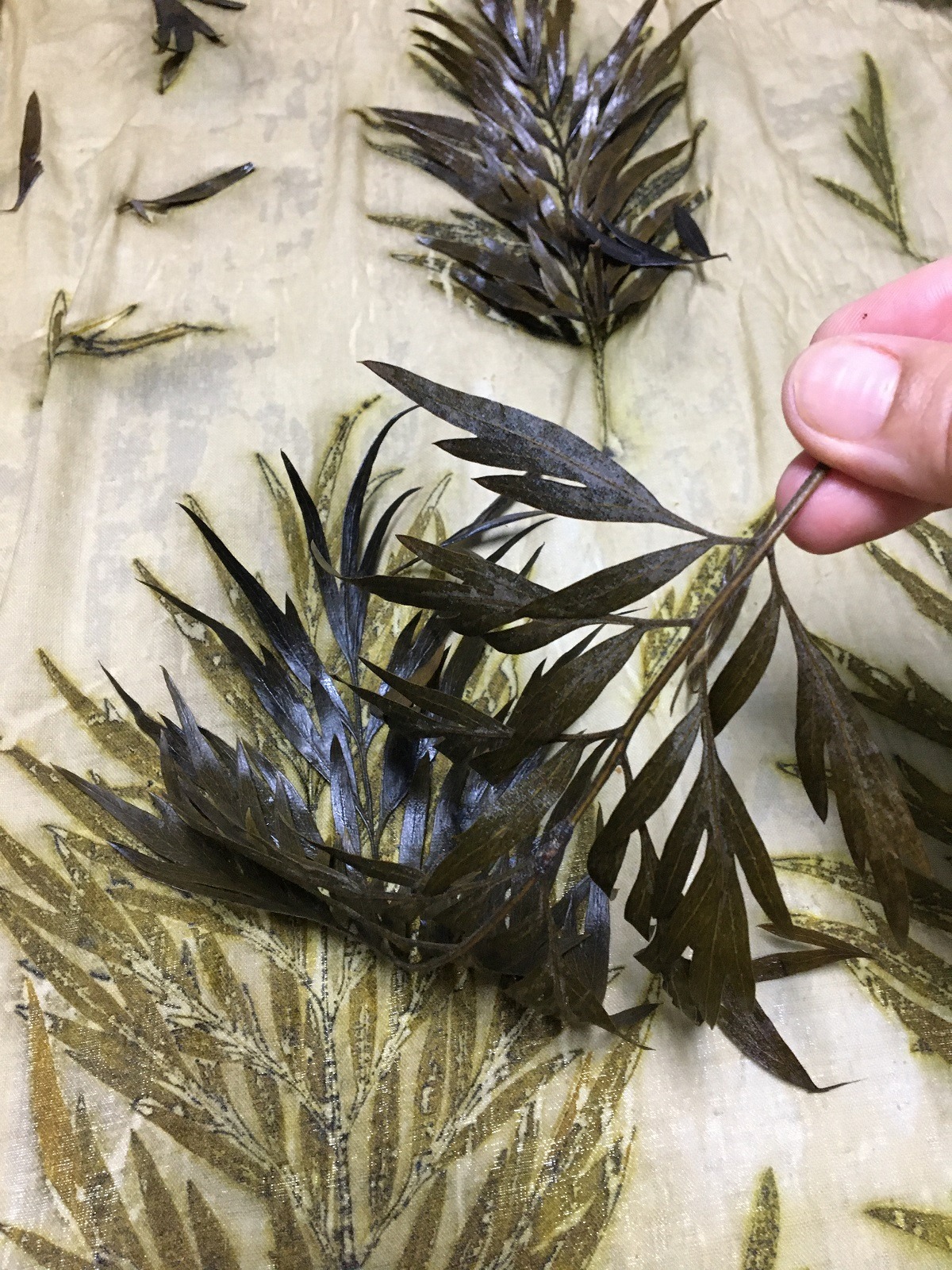
What materials were used in the creation of the piece? How did you select them? Where did you source them?
I have a stock of dried plants, which I combine with fresh ones, because they generate more vivid colors. I know the streets of my neighborhood through the trees. I carefully observe the changes in seasons and the lunar calendar to plan my collections and I follow a production calendar associated with the natural life cycles.
I like to prepare my own tannins with local plants to achieve unique, smoother results, although I also buy ready-made extracts. Most ecoprint equipment can be purchased at stores for restaurants. And many dried plants and medicinal herbs with coloring properties can be found in tea houses, as well as some extracts and aluminum salt (a natural crystal used in canned food and as a mordant in botanical printing). A more sustainable source of materials is to take advantage of food waste, such as avocado seeds and onion skins; or disposals of florists, such as rose leaves.
In “Conexão infinita”, I used mainly the branches with flowers and pods from a tree pruning of the genus Bauhinia, a botanical family very common in the urban landscape of São Paulo. The background with soft tones of blue, green, beige and gray was made with a natural fruit from tropical America, genipapo, found in some markets in São Paulo. From the green fruit a blue pigment is extracted, similar to indigo, which can be kept in the freezer. Its more intense tone approaches black and is widely used in the body painting of several Brazilian indigenous tribes.
In the other works of the “Expressões botânicas” series, I used slices of genipapo to create other effects, such as blue color areas, or to increase the volume and change the shade of bunches of flowers.
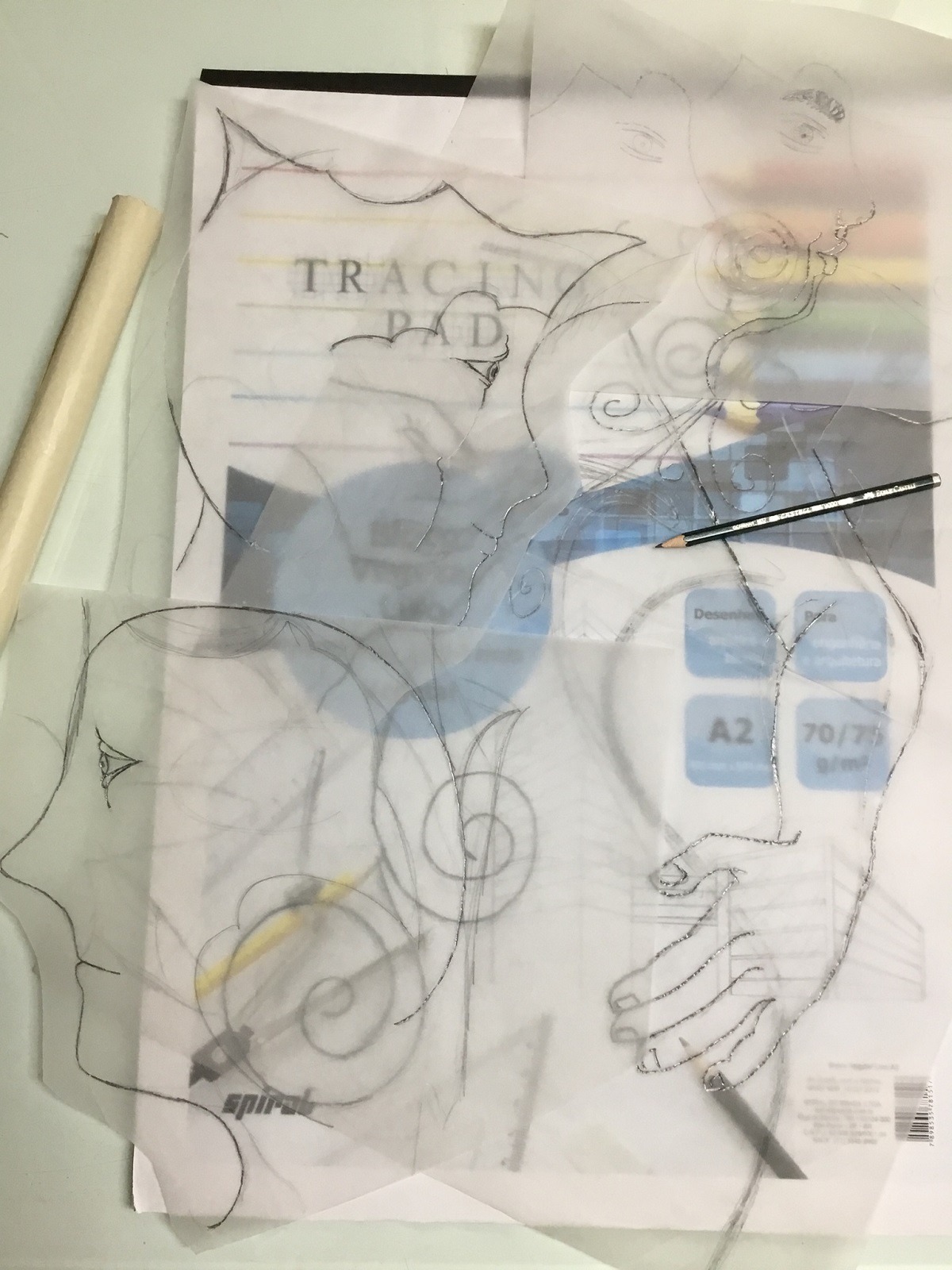
The redesign on the ecoprint was sketched with the aid of copy papers and transfer papers, without any permanent marking.
The solution I found, in order to add more designs to a background so full of information, was working with embroidery, due to its three-dimensionality. The chosen threads have some shine or are metallic. I chose medium tones, which produce a more delicate contrast with the natural colors of the background, printed on raw cotton canvas. In “Conexão infinita” I used a fine metallic thread in copper color 100% Polyester by Gütermann, and sewing threads in blue and beige colors by Coats. In addition, I used two embroidery threads in a brown tone and another orange 100% viscose rayon from Cairel. In another work, “Alquimistas”, I used Amann gold threads, also 100% Polyester but much more resistant.
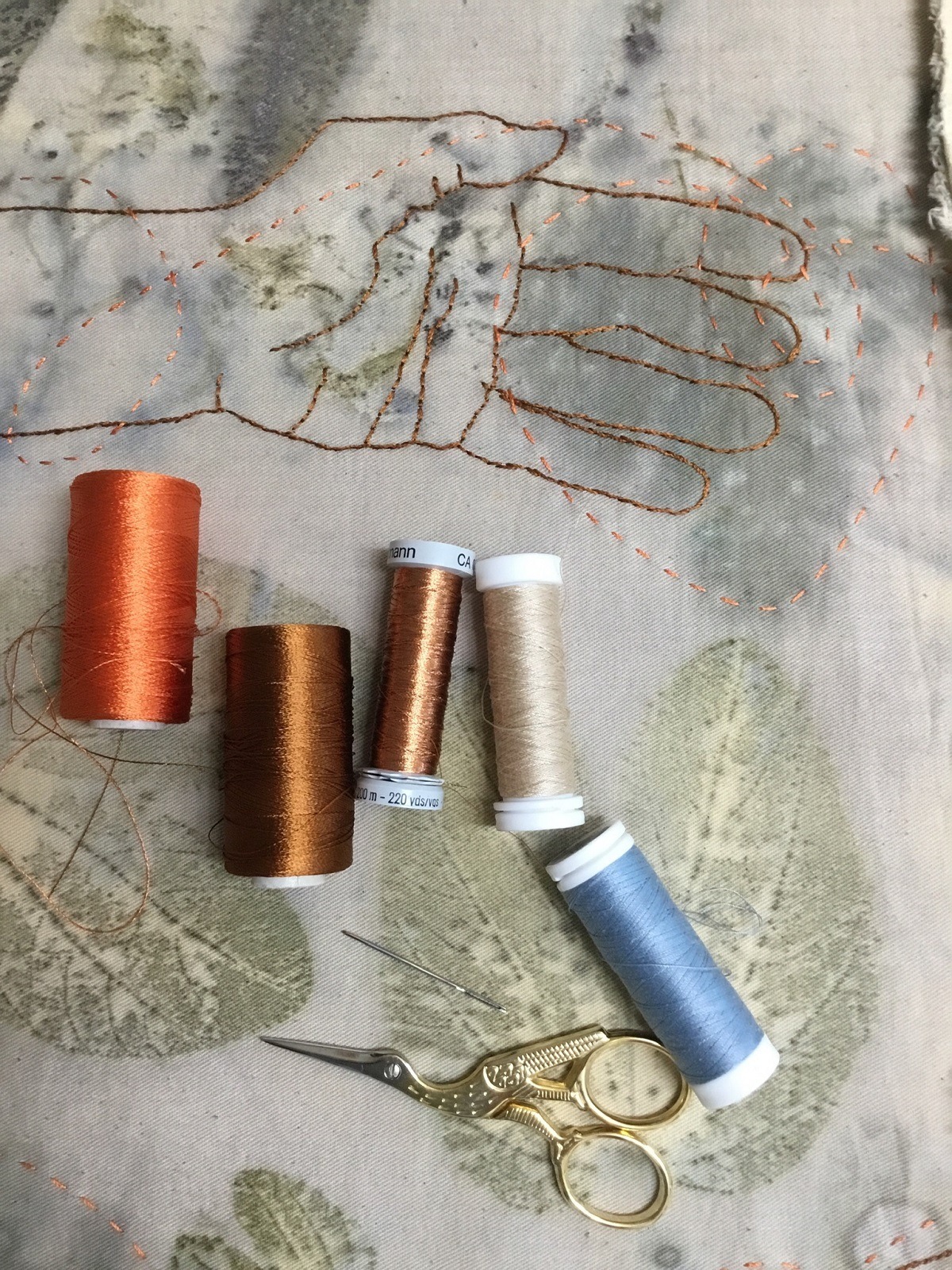
What equipment did you use in the creation of the piece and how was it used?
My kitchen becomes the extension of my studio when I use my stove and aluminum pots with a capacity of 18 liters of water. Most of the utensils needed to make an ecoprint already exist in any kitchen, such as wooden spoons, scales, sieves and wash basins. I carefully separate this equipment from that used for food production.
I have a long stainless steel table to work with large formats. I perform the hot process to accelerate the physical-chemical reactions, in a long sequence of steps, over several days. For this series I use mordants based on iron, aluminum, vinegar and lime (the same used to make sweets). The contact of the plants with the fabric is reinforced by a blanket soaked in tannin, which is positioned over the entire composition made on the table. The set is rolled and squeezed to remove air bubbles, tied, steamed for two hours, washed and ironed.
I use a domestic Janome 2008 machine to join the work pieces together and sew a fabric frame. The margins are 12 cm wide strips of the same canvas fabric, naturally dyed with coffee powder to achieve a neutral tone, the same for the whole series. This finish allows the work to be stretched and mounted on a wooden frame and hung on the wall. Thus, the final dimensions of the work including the margins are 98cm x 128cm. By my calculations, each piece requires between 100 and 150 hours of work.
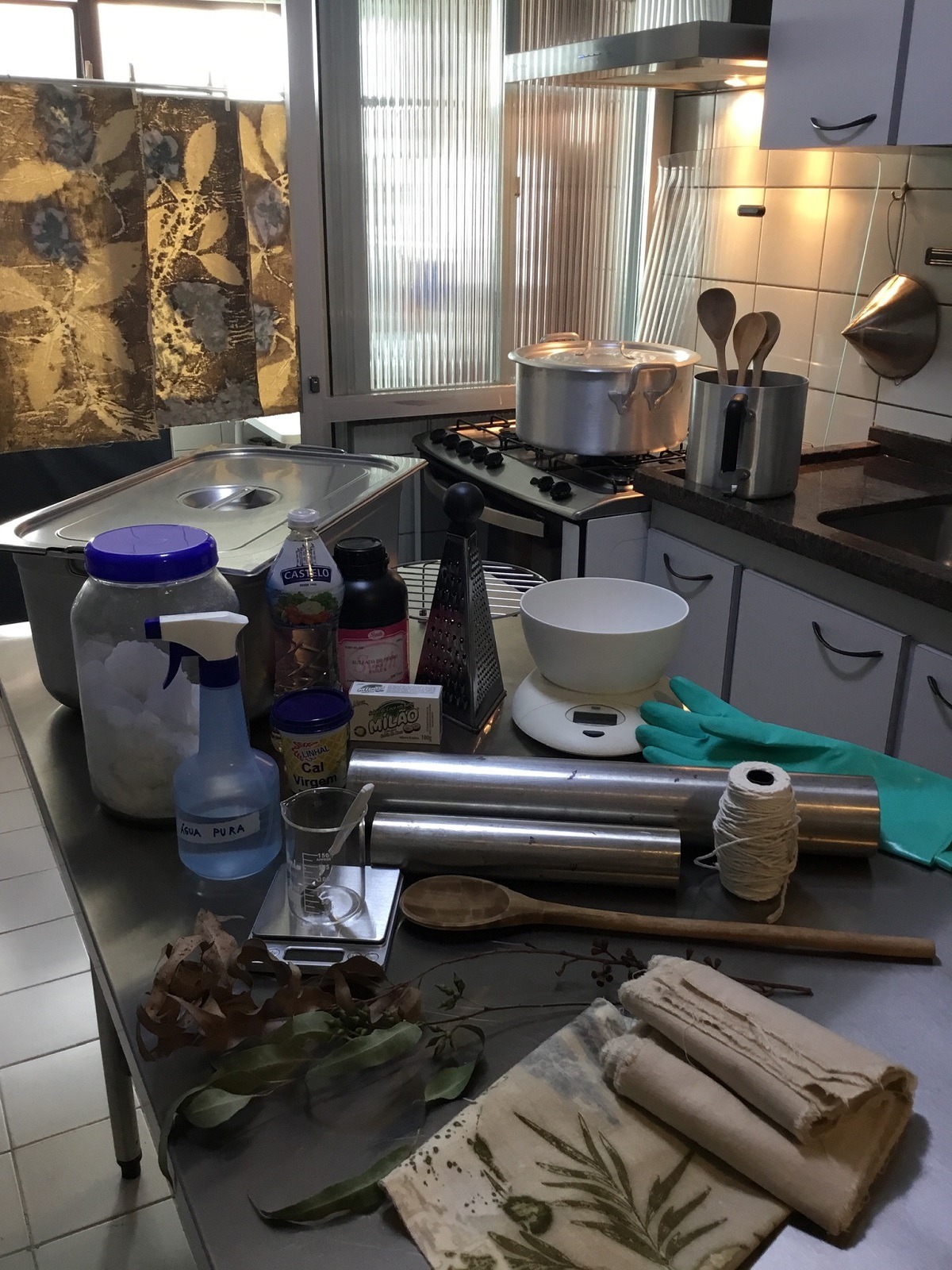
Stitching the human element
Take us through the creation of the piece stage by stage
With the botanical prints ready, it’s time to define the arrangement of the three parts that will compose the work. It is at this moment that the narrative begins to emerge. I try to discover profiles of human faces and the best way to position them. I observe which hand movements and which expression of eyes can indicate actions, emotions and suggest stories. Some elements are clearly shown, others not so much. In the artwork “Alquimistas”, for example, a huge vase is naturally defined by the outline of some branches and becomes the central focus of the action of a restorative breath. To study the possibilities, I make several pencil sketches using copy paper until I find a harmonic result.
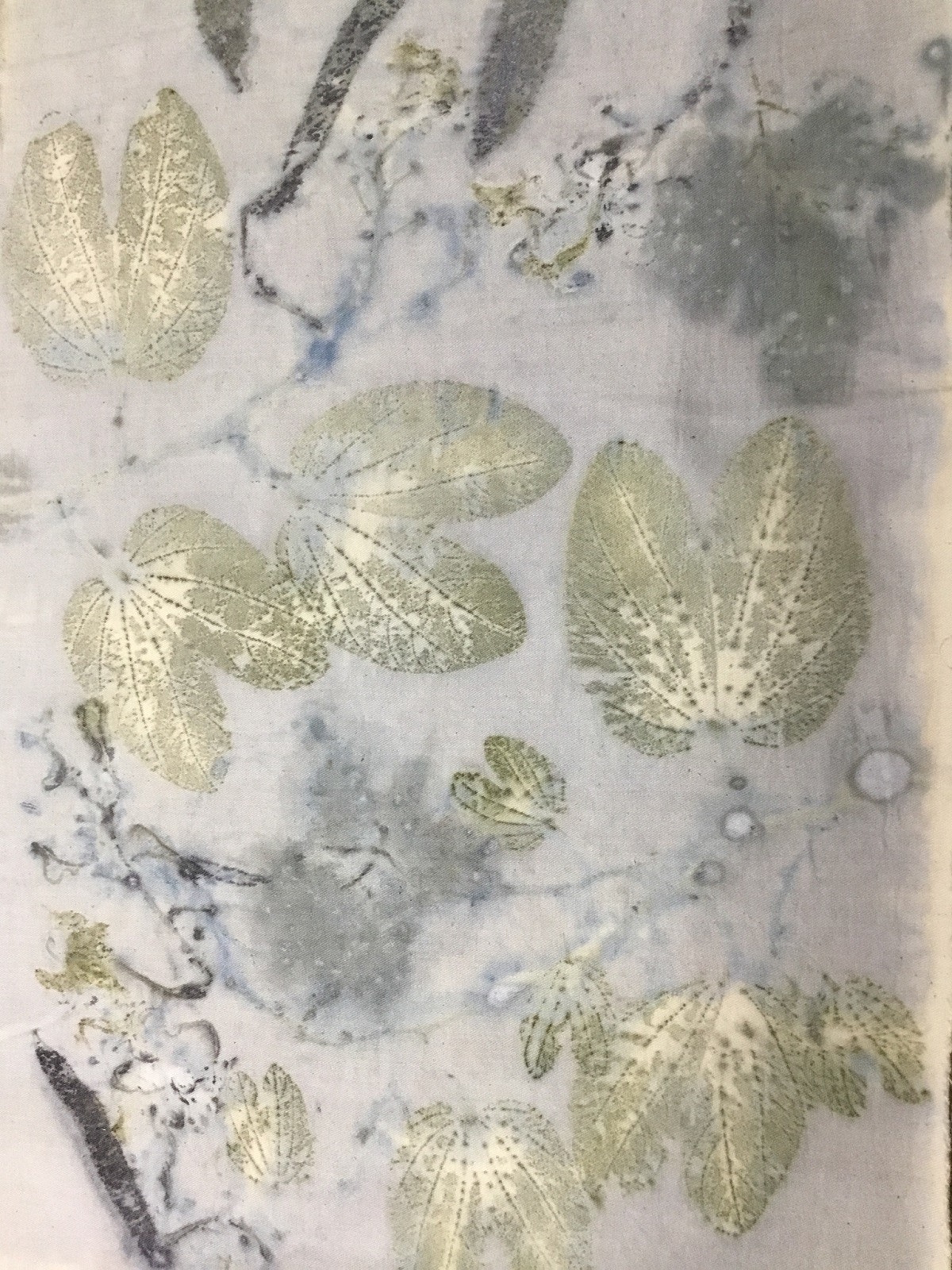
The division into three parts is very useful because it shares different spaces, which allow me to play with the perspective and proportions of the body. This fragmentation is reinforced by the apparent seam. Even so, I try to establish passages of shapes and colors, to generate a logical continuity between the three areas, creating a sense of unity and completeness. Most people are used to internal or hidden seams inside of clothes and other everyday artifacts. This inversion explored by many contemporary artists leads us to have this look inside. In the case of “Conexão infinita”, I try to pay attention to the duality between body and spirit.
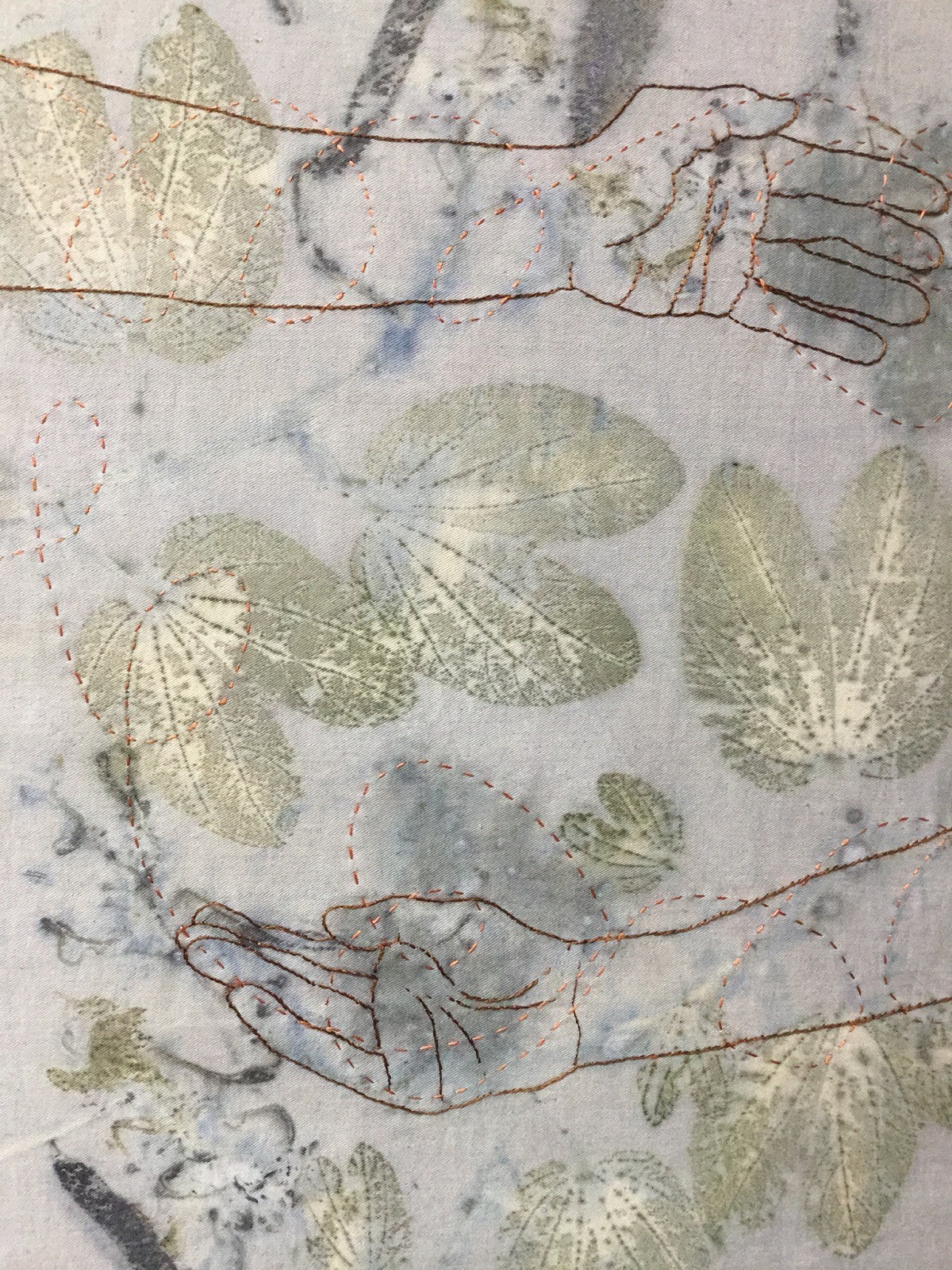
The option for hand embroidery allows the design to be changed without leaving any traces or damaging the cotton canvas. The idea is not to lose the magic of botanical printing, which remains as in the original. I almost always use three threads on the needle and do only simple outline stitches, as running, back and stem stitches, more or less regular. But throughout the process, the embroidery is dismantled and redone several times, either to readjust the proportions of the design or because the initial idea is modified. I try to match the embroidered lines with the lines already printed by the plants in the background, as if the image were already there, just waiting for someone to discover it.
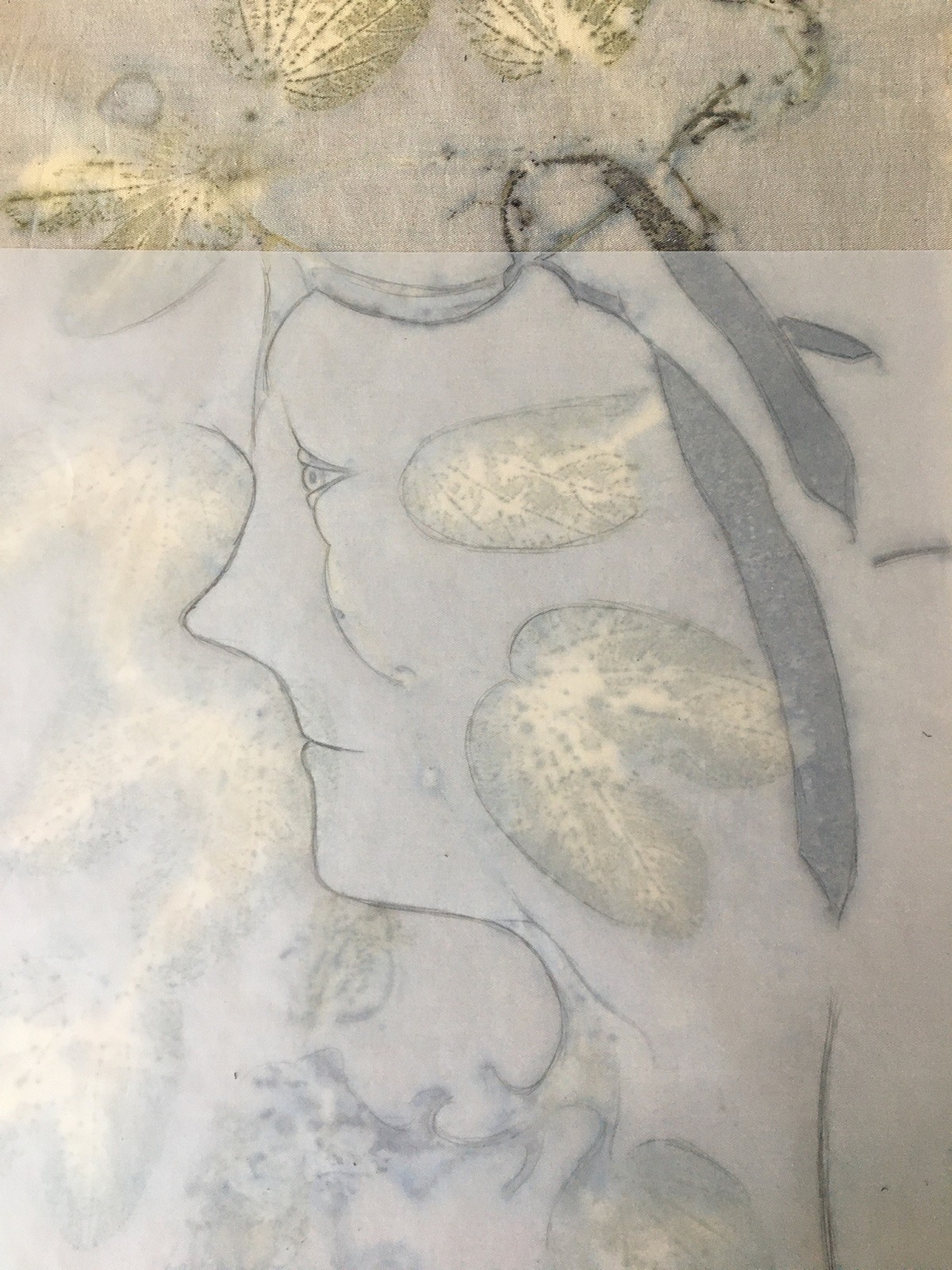
What journey has the piece been on since its creation?
“Conexão infinita” is just one of three pieces in a small thematic series that I started producing at the beginning of the isolation period due to the pandemic. The third work is still in progress, but it can probably be seen on my website www.anamaier.com when this article is published. I intend to expose this series as soon as possible. May good proposals come!
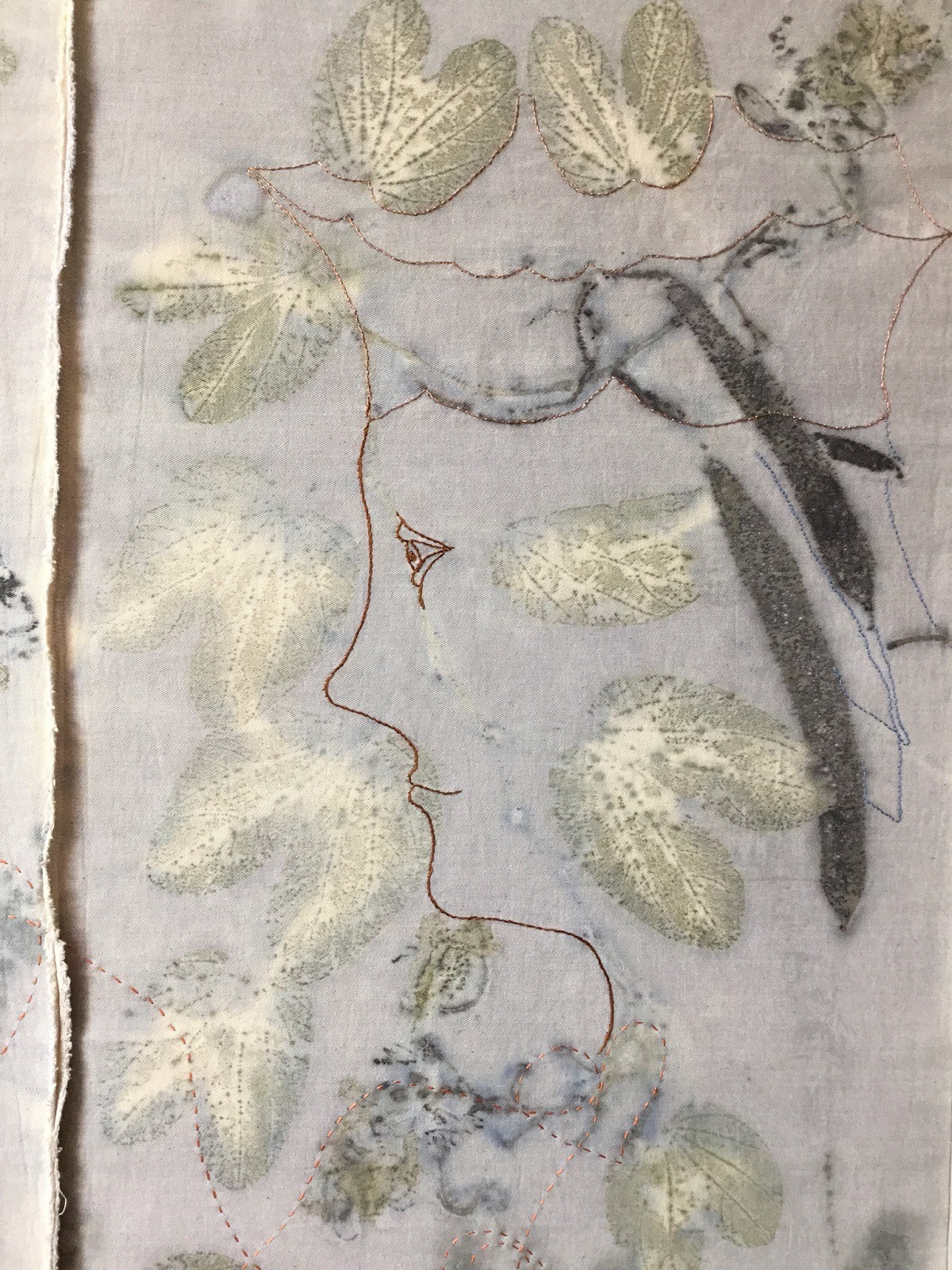
For more information visit www.anamaier.com
Has Ana’s story given you ideas or inspiration? We’d love to know – please share your comments below.
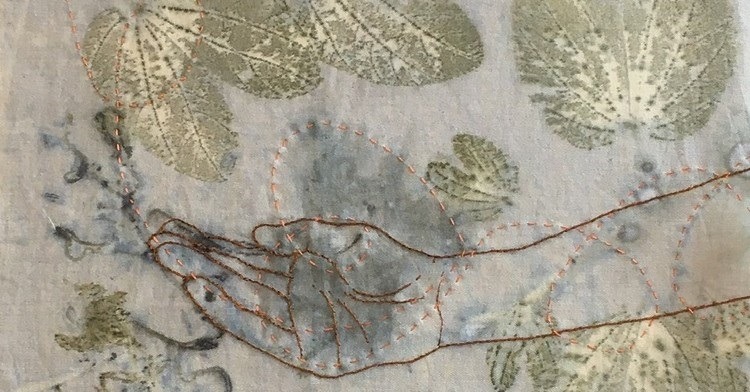

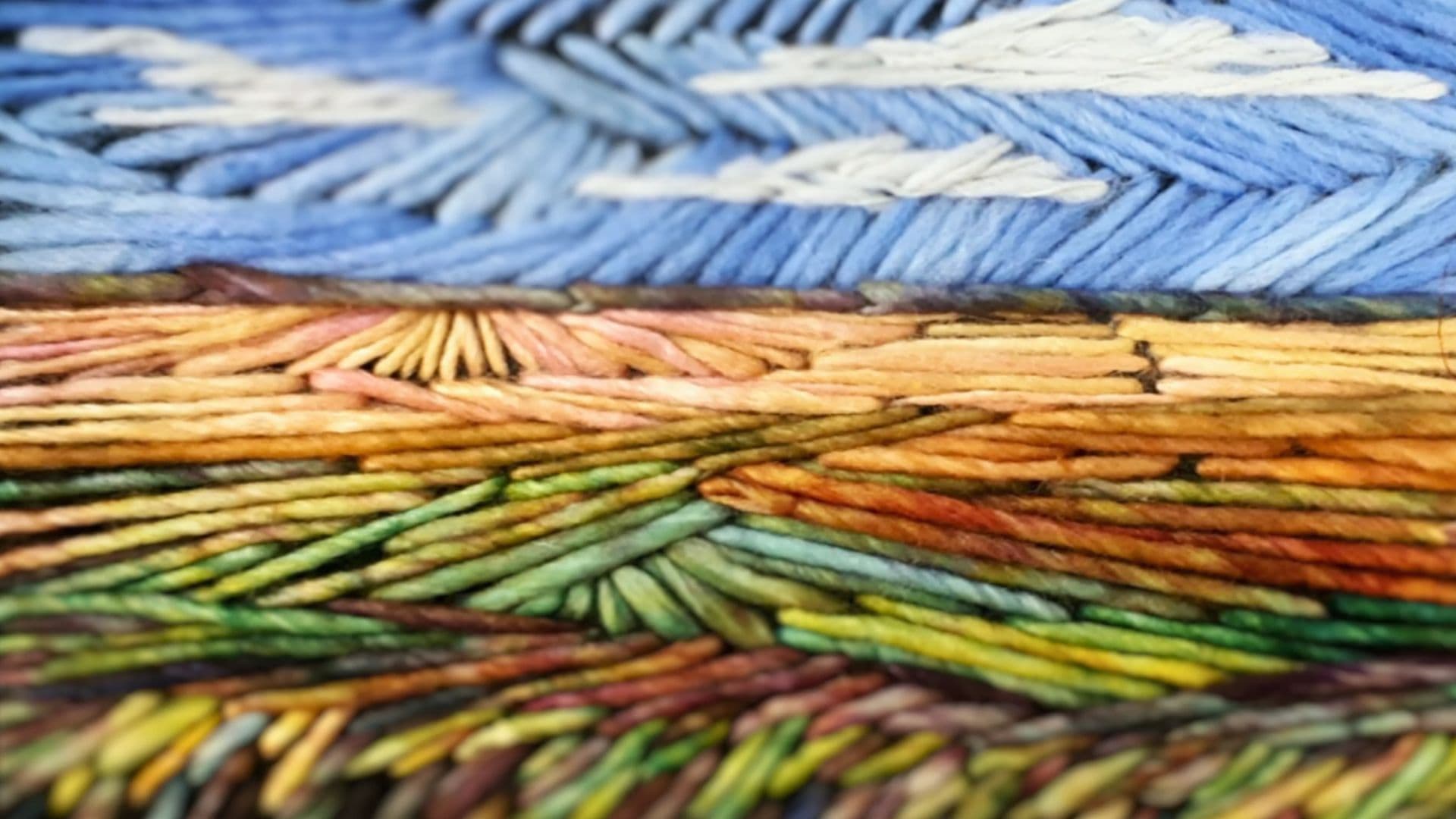
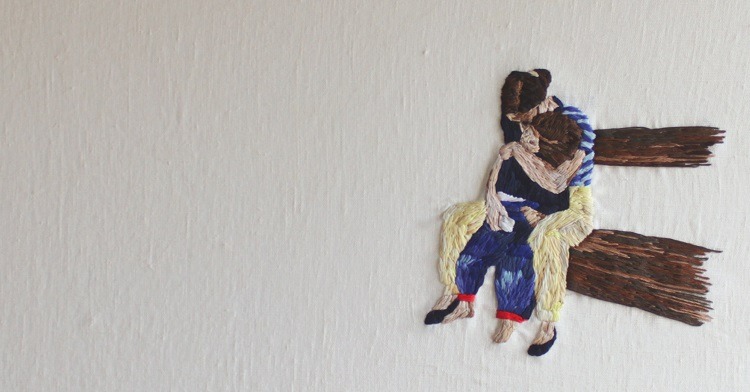
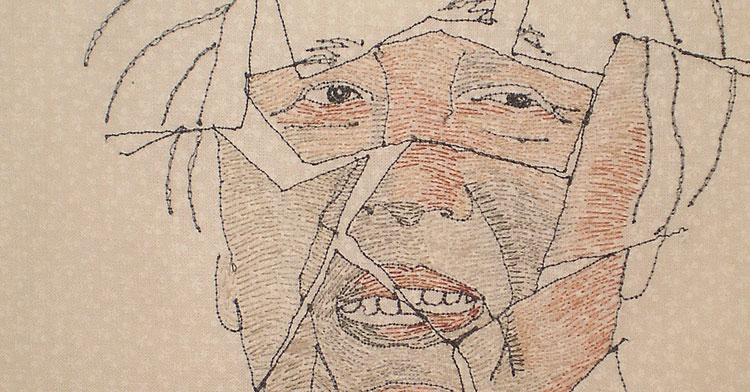
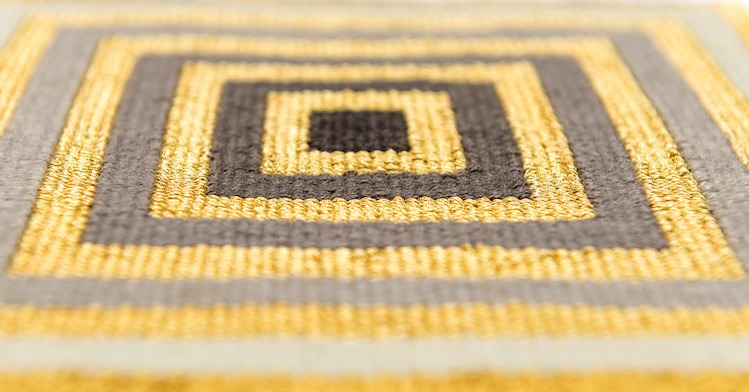
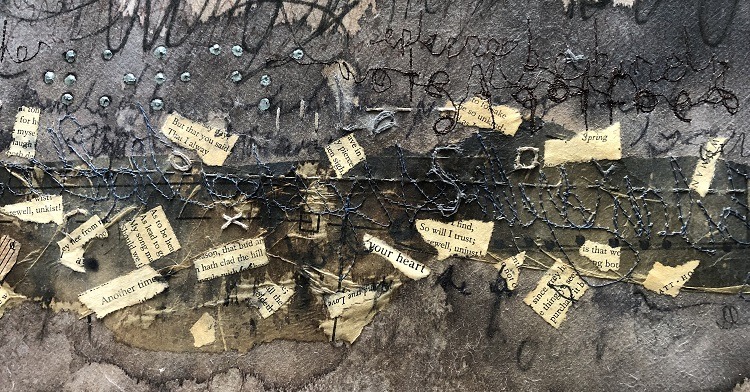
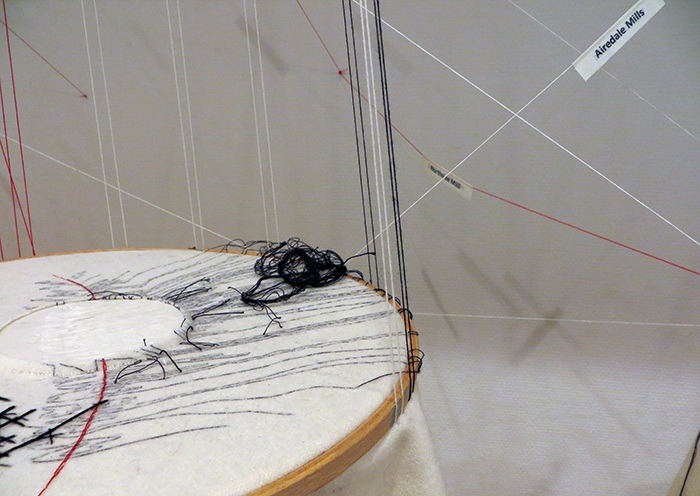
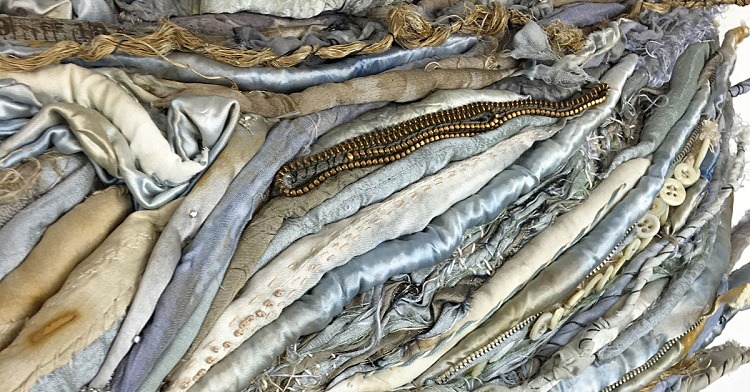
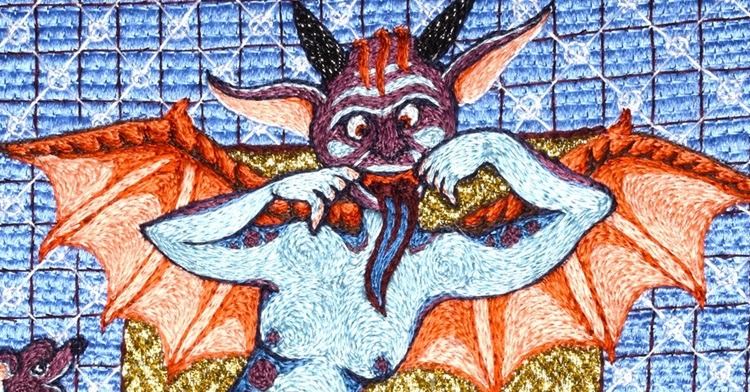
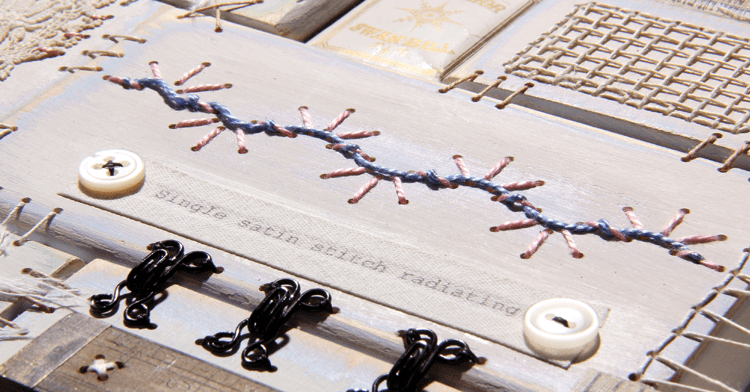
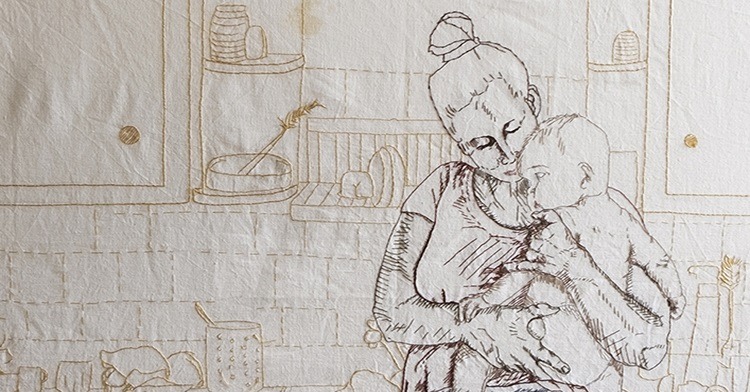
8 comments
Ellen
Wonderful work !!
I got to know Ana during an ecoprint workshop in Uruguay.
Her work is sensitive, thoughtful and gentle with a message.
Exactly as I experienced Ana during the workshop.
I wish her lots of success with her beautiful work .
Ana Maier
It is an honor to be praised by you Helen! I am always fascinated by the beauty of your ecoprints! They convey the strength, harmony and diversity of nature. I confess that at the workshop I admired your way of work, almost meditative, calm and focused. You are a very special person and an artist that I was lucky to meet.
Aruna
Very motivational read.I have been doing lots of Embroidery of the styles fro. India my home country. I am motivated to use some vegetable colours., will try with embroidery and share here.
Thank you
Aruna
Ana Maier
Thank you Aruna! I love the bold colors and the style of Indian embroidery and I am very curious to see how you will solve this in your work. Enjoy it! If you want to know more about my work, visit my website http://www.anamaier.com or my Instagram ateliesempreviva
Helen Roberts
I found this article and Ana’s work fascinating. I have been experimenting with eco printing for 2 years now and have been pondering how to combine this technique with hand stitching. Ana’s beautiful stitching has given me much food for thought
Ana Maier
Thank you Helen! I needed some time and a lot of experimentation to mature this process but I was very impressed to discover the strength that these two combined techniques reveal. I wish you can find the solutions you are looking for and be surprised too! If you want to know more about my work, visit my website http://www.anamaier.com or my Instagram ateliesempreviva
Judith Elder-McCartney
Love this newsletter, story and pictures by Ana. I can’t wait to try some of he ideas in my own work. Thanks so much for sharing this with me.
Ana Maier
Thank you Judith! I’ve been inspired by so many articles published by textileartist.org. I’m very happy to know that my creative process also inspires other artists.Have fun by experimenting. If you want to know more about my work, visit my website http://www.anamaier.com or my Instagram ateliesempreviva